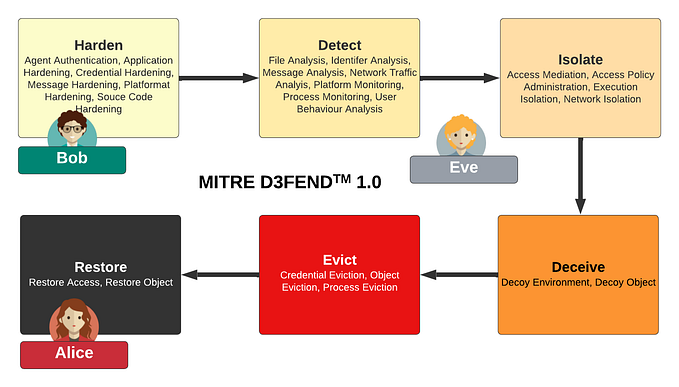
Elliptic Curve Key Pair Generation for Virtually Every Possible Standard Curve
There are lots of different types of standard elliptic curves, and the most common ones are Brainpool, SEC, and NIST. The two most common curves are secp256k1 (as used in Bitcoin and Ethereum) and NIST (FIPS) P-256 (as used in TLS). These curves give us around 128 bits of security. Famously secp256k1 has the curve parameters of:
G=(79be667ef9dcbbac55a06295ce870b07029bfcdb2dce28d959f2815b16f81798,483ada7726a3c4655da4fbfc0e1108a8fd17b448a68554199c47d08ffb10d4b8,1,0), N=115792089237316195423570985008687907852837564279074904382605163141518161494337, H=1
A =0
B=7
Field size=256But there are many other curves, including Brainpool256r1:
G=(8bd2aeb9cb7e57cb2c4b482ffc81b7afb9de27e1e3bd23c23a4453bd9ace3262,547ef835c3dac4fd97f8461a14611dc9c27745132ded8e545c1d54c72f046997,1,7d5a0975fc2c3057eef67530417affe7fb8055c126dc5c6ce94a4b44f330b5d9), N=76884956397045344220809746629001649092737531784414529538755519063063536359079, H=1
A =7d5a0975fc2c3057eef67530417affe7fb8055c126dc5c6ce94a4b44f330b5d9
B=26dc5c6ce94a4b44f330b5d9bbd77cbf958416295cf7e1ce6bccdc18ff8c07b6
Field size=256With elliptic curve cryptography, we start with a definition for the curve, such as:
y²=x³+ax+b (mod p)
This defines values for a, b and p. Next we select a base point on the curve (G, and generate a random scalar value (D). This is the private key, and where the public key is generated from a point multiplcation of:
Q=D.G
This results in an (x,y) point on the curve.
Coding
First we create a folder named “bc_ec02”, and then go into that folder.We can create a Dotnet console project for .NET 8.0 with:
dotnet new console --framework net8.0Next we can install the Bouncy Castle library with:
dotnet add package BouncyCastle.Crypto.dll --version 1.8.1Next some code [here]:
namespace ECCurves
{
using Org.BouncyCastle.Asn1.X9;
using Org.BouncyCastle.Security;
using Org.BouncyCastle.Crypto.Parameters;
class Program
{
static void Main(string[] args)
{
var curvename="secp256k1";
if (args.Length >0) curvename=args[0];
try {
X9ECParameters ecParams = ECNamedCurveTable.GetByName(curvename);
var curveparam = new ECDomainParameters(ecParams.Curve, ecParams.G, ecParams.N, ecParams.H, ecParams.GetSeed());
Org.BouncyCastle.Crypto.Parameters.ECKeyGenerationParameters keygenParams = new Org.BouncyCastle.Crypto.Parameters.ECKeyGenerationParameters (curveparam, new SecureRandom());
Org.BouncyCastle.Crypto.Generators.ECKeyPairGenerator generator = new Org.BouncyCastle.Crypto.Generators.ECKeyPairGenerator();
generator.Init(keygenParams);
var keyPair = generator.GenerateKeyPair();
var privateKey = (ECPrivateKeyParameters) keyPair.Private;
var publicKey = (ECPublicKeyParameters) keyPair.Public;
Console.WriteLine("== Curve: {0} ",curvename);
Console.WriteLine("\n== Private key === ");
Console.WriteLine("== D ==={0} ",privateKey.D.ToString());
Console.WriteLine("\n== Public key === ");
Console.WriteLine("== Q_x ==={0} ",publicKey.Q.XCoord);
Console.WriteLine("== Q_t ==={0} ",publicKey.Q.YCoord);
Console.WriteLine("\n\nCurve details: G={0}, N={1}, H={2}", ecParams.G, ecParams.N, ecParams.H);
Console.WriteLine("A={0}\nB={1}\nField size={2}",ecParams.Curve.A,ecParams.Curve.B,ecParams.Curve.FieldSize);
} catch (Exception e) {
Console.WriteLine("Error: {0}",e.Message);
}
}
}
}We should now be able to generate a key pair for virtually every standard curve possible:

A sample run for secp2561 gives [here]:
== Curve: secp256k1
== Private key ===
== D ===31064867539724903891960137032820676127521229242105362809544430719991795260503
== Public key ===
== Q_x ===8c65b935e0fd6e174c7b180f5d1db7cda52bf8222d11f7abc924067c40e11de8
== Q_t ===6e4602ae3c8f42683f4d7269c4abf55a28bcd69ff84060118f327d25c1074a1e
Curve details: G=(79be667ef9dcbbac55a06295ce870b07029bfcdb2dce28d959f2815b16f81798,483ada7726a3c4655da4fbfc0e1108a8fd17b448a68554199c47d08ffb10d4b8,1,0), N=115792089237316195423570985008687907852837564279074904382605163141518161494337, H=1
A =0
B=7
Field size=256And for NIST (FIPS) P-256 [here]:
== Curve: P-256
== Private key ===
== D ===36520681454922814890347386938615718499728808447933454325466265828246263851321
== Public key ===
== Q_x ===d52722849984ff0a89d50de91877f66377ba4065c5802adc169c235ad37d1eea
== Q_t ===7fc6d99095fe7712f5ec1f5b5f9d5425cf7ae9de4f2d77d4022f67d6f8aa3f75
Curve details: G=(6b17d1f2e12c4247f8bce6e563a440f277037d812deb33a0f4a13945d898c296,4fe342e2fe1a7f9b8ee7eb4a7c0f9e162bce33576b315ececbb6406837bf51f5,1,ffffffff00000001000000000000000000000000fffffffffffffffffffffffc), N=115792089210356248762697446949407573529996955224135760342422259061068512044369, H=1
A =ffffffff00000001000000000000000000000000fffffffffffffffffffffffc
B=5ac635d8aa3a93e7b3ebbd55769886bc651d06b0cc53b0f63bce3c3e27d2604b
Field size=256Here is the creation using Microsoft Code:

Conclusions
Elliptic Curves saved the Diffie-Hellman method, and where we now typically use ECDH (Elliptic Curve Diffie Hellman), and for digital signatures, ECDSA (Elliptic Curve Digital Signature Algorithm) and EdDSA are used as an alternative to RSA signatures. And, as RSA keys get larger, it takes much more time to generate them, where elliptic curve keys do not scale up as much — and thus more efficient in their creation.
Go try some key generation here:









